
Senior physics writer Emily Conover joined Science News in 2016. She has a Ph.D. in physics from the University of Chicago, where she studied the weird ways of neutrinos, tiny elementary particles that can zip straight through the Earth. She got her first taste of science writing as a AAAS Mass Media Fellow for the Milwaukee Journal Sentinel. She has previously written for Science Magazine and the American Physical Society. She is a two-time winner of the D.C. Science Writers’ Association Newsbrief award, and a winner of the Acoustical Society of America’s Science Communication Award.

Trustworthy journalism comes at a price.
Scientists and journalists share a core belief in questioning, observing and verifying to reach the truth. Science News reports on crucial research and discovery across science disciplines. We need your financial support to make it happen – every contribution makes a difference.
All Stories by Emily Conover
-
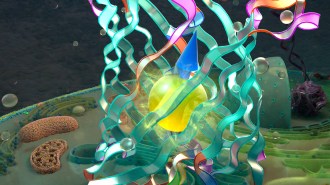 Physics
PhysicsScientists made a biological quantum bit out of a fluorescent protein
Researchers could use quantum effects to develop new types of medical imaging inside cells themselves.
- Physics
A ‘ringing’ black hole matches scientists’ predictions
Gravitational waves emitted after two black holes coalesced agree with theories from physicists Stephen Hawking and Roy Kerr.
-
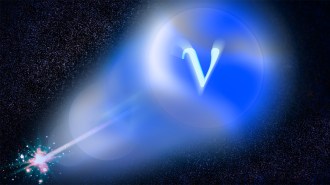 Particle Physics
Particle PhysicsThis laser would shoot beams of neutrinos, not light
The subatomic particles called neutrinos are famously elusive. But an unconventional trick could make a laser beam of the aloof particles.
-
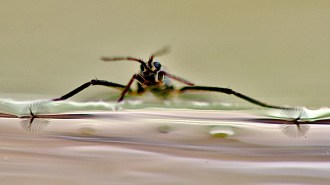 Animals
AnimalsFrilly bug feet inspire a water-striding robot
Ripple bugs’ nimble movements on the surface of water inspired a robot with automatically unfurling fans on its feet.
-
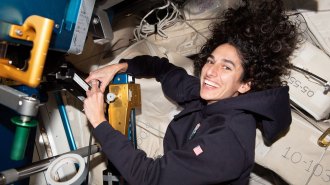 Space
SpaceAstronauts need oxygen. Magnets could help
Adding a magnet could simplify the process of producing oxygen in space, making a crewed mission to Mars more feasible.
-
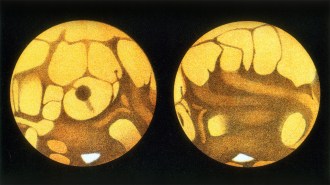 Planetary Science
Planetary ScienceHow alien ‘canals’ sparked debate over life on Mars
In The Martians, journalist David Baron recounts scientific and public debate over purported intelligent life on the Red Planet.
-
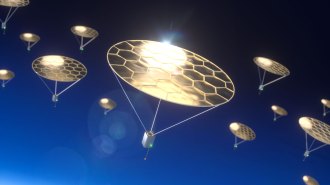 Physics
PhysicsSunlight is all that’s needed to keep these tiny aircraft aloft
Sun-powered fliers could use photophoretic forces to hover in the mesosphere, gathering data from a region off limits to planes and balloons.
-
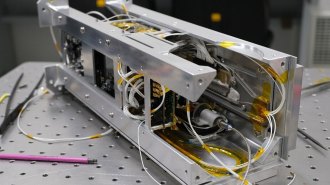 Quantum Physics
Quantum PhysicsA quantum computer goes to space
Quantum computers in space could be useful for communications networks or for testing fundamental physics.
-
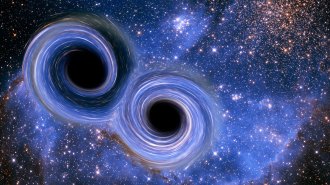 Space
SpaceThe biggest black hole smashup ever detected challenges physics theories
Gravitational waves spotted by LIGO reveal two black holes, 140 and 100 times the mass of the sun, merged to become a 225 solar mass behemoth.
-
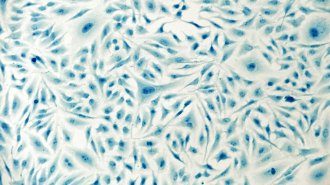 Physics
PhysicsScientists 3-D printed a tiny elephant inside a cell
The first structures ever 3-D printed inside living cells point to applications for biology research.
-
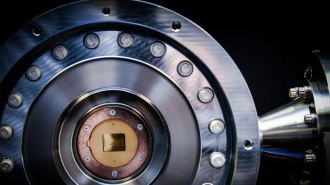 Quantum Physics
Quantum Physics‘Magic’ states empower error-resistant quantum computing
Special quantum states allow computers to perform the most difficult class of quantum computing operations.
-
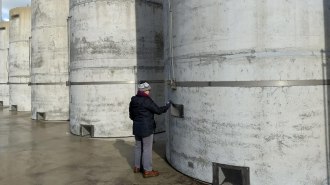 Science & Society
Science & SocietyA Supreme Court ruling on nuclear waste spotlights U.S. storage woes
Court ruling allows interim nuclear waste storage in Texas, but the U.S. still has no long-term plan for its 90,000 metric tons of spent fuel.